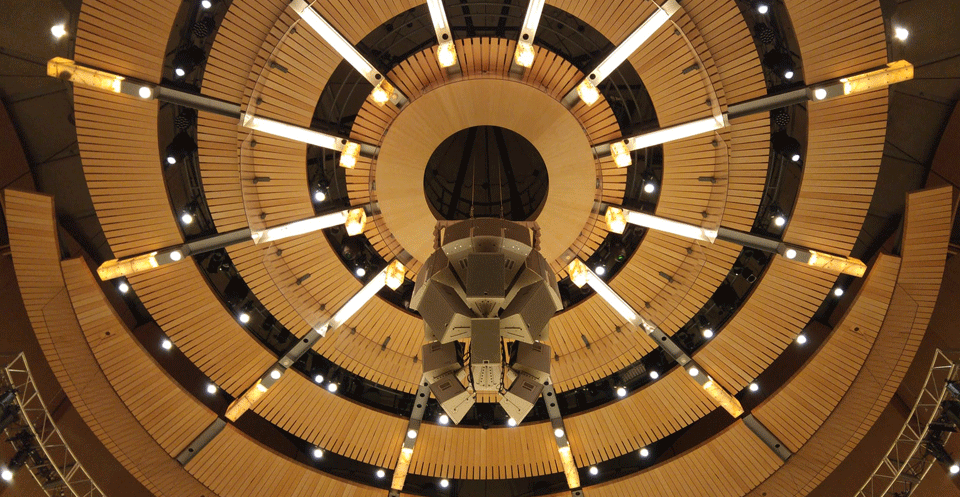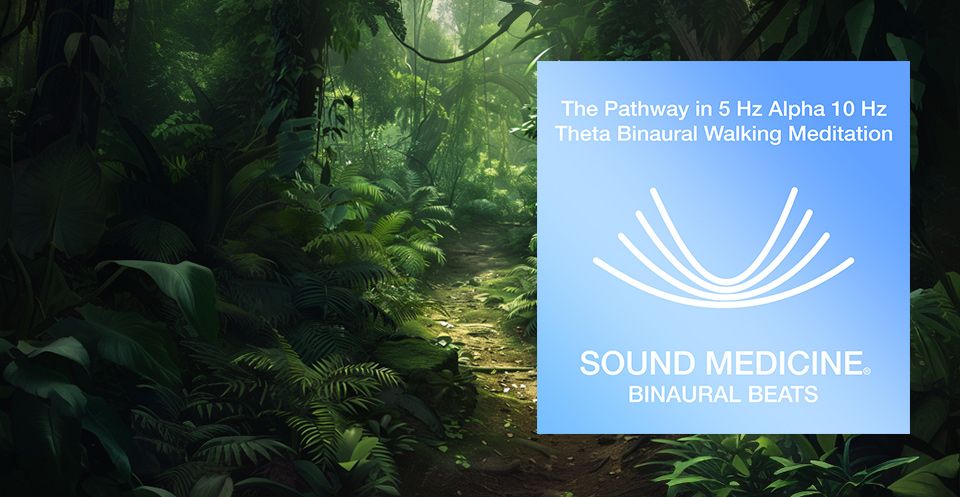The Frequency Of Fear

According to recent studies, your brain learns and expresses fear at a certain brainwave frequency, and changing the frequency can change the feeling. Researchers found that the brainwave frequency of fear is four cycles per second, or 4 hertz. They discovered that the brain’s prefrontal cortex and amygdala, two regions that are associated with learning and expressing fear, communicate with each other through synchronized neural rhythms in the brain, which are also called brainwaves. In experiments with mice, the researchers measured the fear response in the prefrontal cortex of the brain as operating at four cycles per second, or 4 hertz. They found a 4 hertz brainwave in the amygdala at the same time. In other words, the researchers found that a sustained brainwave of 4 hertz joined the two areas of the brain and synchronized their electrical activity. What this means is that different regions in the brain can communicate with each other through the rhythm, vibrations, or frequency at which their neurons pulse.
How Brainwave Frequencies Affect You
In terms of body chemistry, brainwave frequencies correspond to emotional states in the brain, which in turn instruct the body to create a bath of chemicals. In the case of fear, the brain’s response causes your adrenal glands to send cortisol and adrenaline into the bloodstream. It also causes glucose (sugar) to be released into your bloodstream. Although our bodies release these chemicals to ensure our survival in response to danger, they are not intended to linger. None of these things are good for our systems over the long term. If glucose, cortisol and adrenaline remain too long in the bloodstream they become like house guests that have overstayed their welcome and create all sorts of unintended and unpleasant consequences.
What does this mean for you in your daily life? Instead of being locked into an unpleasant and potentially destructive fear response, could you use sound to stay present and flexible instead? Let’s review what science tells us about brainwaves. The three basic states of human consciousness are regulated by a network of nerves in the brainstem called the Reticular Activating System.
Three Basic States of Human Consciousness
- Waking
- Slow-wave sleep, resting
- Deep sleep and dreaming (REM)
It is theorized that the three states of consciousness relate to and can be further broken down into the five general brainwave states, a little like the five gears in your car. The five general brainwave states correlate to cognitive/emotional states that respond to the frequency, or intensity, of the brainwaves.
Five General Brainwave States and Related Cognitive/Emotional States
GAMMA > 35 Hz Concentration
BETA 12 - 35 Hz Anxiety dominant, active, external attention, relaxed
ALPHA 8 -12 Hz Very relaxed, passive attention
THETA 4 to 8 Hz Deeply relaxed, inward focused
DELTA 0.5 to 4 Hz Sleep
Brainwaves vibrate, or oscillate, together like synchronized pendulums, a phenomenon called coupled oscillation. All of these vibrations create a symphony with dominant notes, or frequencies. Just as your favorite wine may have a number of influences and still have several top or final notes that stand out, brainwaves do the same.
Can We Control or Even Transform Our Brainwaves?
Although we know that energy cannot be created or destroyed, it can be transformed. Transduction is the process by which one form of energy is changed into another. A fully-controlled, double-blind experiment published in the journal Psychology & Neuroscience showed that exposure to binaural beats at a frequency of 6-Hz (theta) was related to an induction of fear from the amygdala. The study’s authors suggested that the Theta binaural beats effected the brain’s amygdala and frontal cortex, creating the calmer state associated with Theta.
What Does This Mean for Me?
- Music is made up of frequencies, binaural beats are frequencies, and they can be used to resonate our brainwaves, with our permission (Atwater, 2001).
- Music is made of rhythms and can be used to entrain our brainwaves (Jovanov & Maxfield, 2011).
- Binaural beats can achieve specific cognitive/emotional goals related to those frequencies (Pluck, 2019)
- Vibration in general is a powerful tool of communication. Some quantum philosophers, such as Ervin Laszlo, say that vibration is the language of consciousness (2017). We can consciously use vibration to make changes in our states of consciousness.
General suggestions for using auditory binaural beats to affect your state of consciousness:
- Use good headphones. You will need to use both your ears for the beats to work because the beats are made by detuning a frequency and sending the two different frequencies separately. The binaural beats will be buried under the sounds from musical or instrumental pieces, which also contain their own medicine. Choose the music that works for you and for your specific goal.
- Establish a plan for relaxation while using binaural beats: Where will I listen to the beats? What else will I do while listening to the beats? Breathing? Mantra? Meditation?
- Keep a binaural beat journal
- Use the journal to answer the following questions: What is my stated goal? Creativity? Concentration? Meditation? Sleep? How often did I use BB each week? How long did I use them for? What were the effects?
- Important to note: Have I experienced any resistance? What are my protocols for when I feel resistance? Take a walk? Have some tea? Step into nature? Call a friend?
Remember, our nervous system is a rhythm. Fear has an emotional response can be successfully approached as a rhythm, and that rhythm can be changed. Think of how you feel when you listen to Metallica v. Mozart—you feel two totally different emotional rhythms. Anything having to do with the nervous system is a rhythm, such as the rhythms of your cardiovascular or endocrine systems. Our bodies operate within daily circadian rhythms, and even smaller hourly ultradian rhythms. Your overall rhythm or frequency at any given moment can be identified and accessed by becoming aware of your emotions. It is easier than you think to find your emotional frequency and match it with the corresponding brainwave frequency—and then consciously direct it to where you need to go. Once you learn how to do this, you will have yet one more power to transform your emotional states and access an abundance of healing resources.
Here are some ideas and suggestions, based on what the clinical studies are beginning to reveal. Try them and see what works for you.
First, identify your emotional state. In this case, if you are feeling fearful, ask which style of fear response you are in. Are you in the fight, flight, or freeze style? If you are in the fight or raging mode, you might try listening to a theta binaural beat track that includes faster beats and rhythmic drums. At the same time you could do an aerobic, more intense activity to help your body to work off the cortisol, adrenaline, and blood sugar that it has just released. Once you feel calmer, see if you can find a neutral, centered meditative place where you can focus on a positive emotion like love, appreciation, gratitude or awe. Now you have taken deliberate action to fully transform your fear. If you are in flight mode, I would recommend taking the same steps.
If your fear puts you in freeze mode, I would recommend using a neck vibrating pillow which provides a constant, stable, safe and comforting vibration, while listening to more down tempo, contemplative, beautiful Theta binaural beats. In 20 minutes you will notice a big difference in how you feel, just from the synchronizing effects of the binaural beats alone (Solca, 2019; Perez, 2020). Here I would hope that you shift into peace and serenity. Then, if you can do it, you are ready for a walk in nature, because it is important to get unfrozen and safely move your body. The music will help you motivate, and the synchronization of walking will further balance your brain. The beauty of nature is a powerful way to access the positive emotions of love, awe and inspiration. If you do not have access to nature, simply walk in the calmest city blocks you can find and listen to nature sounds on your smart phone or other device.
Other easy access points to re-center and stop ourselves from going into fear:
- Breathe rhythmically while counting (synchronizes you)
- Use yourself as resonating chamber (singing or humming draws the focus back inwards, fear is outwardly focused in hypervigilance)
- Use nature as calming frequency
- Get the “White Noise” or other App on your phone with nature sounds
Lastly, don’t forget your own predispositions—we are all different. Just as not every outfit in the store will look good on us, studies have shown that binaural beats do not work the same for everyone. So be willing to go through some trial and error to find the brainwaves, activities and rhythms that work for you. Use binaural beats in your nervous system self-care tool kit, as a safe and non-invasive way to transform your fear into neutral emotions, or better yet, into the positive emotions of love, gratitude, awe and inspiration.
Three suggested companies with brain research-based binaural beats products are:
- Holosync.com :: Self-improvement • Brain-enhancement • Stress relief
- Hemi-sync.com :: Meditate • Relax • Sleep • Concentrate • Create • Wellness
- iAwake.com :: Deepen spiritual life • Increase intelligence and mental focus • Creativity










